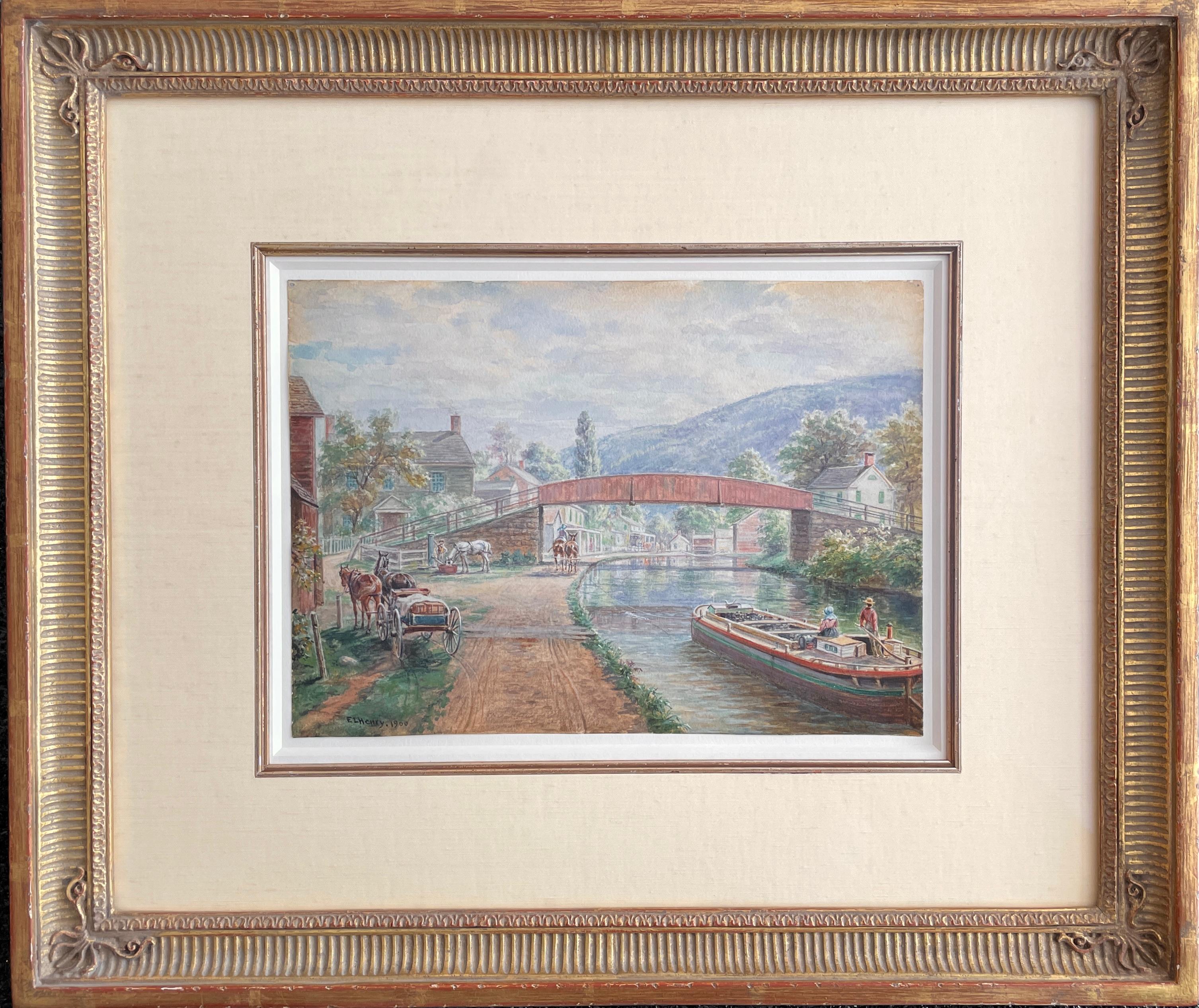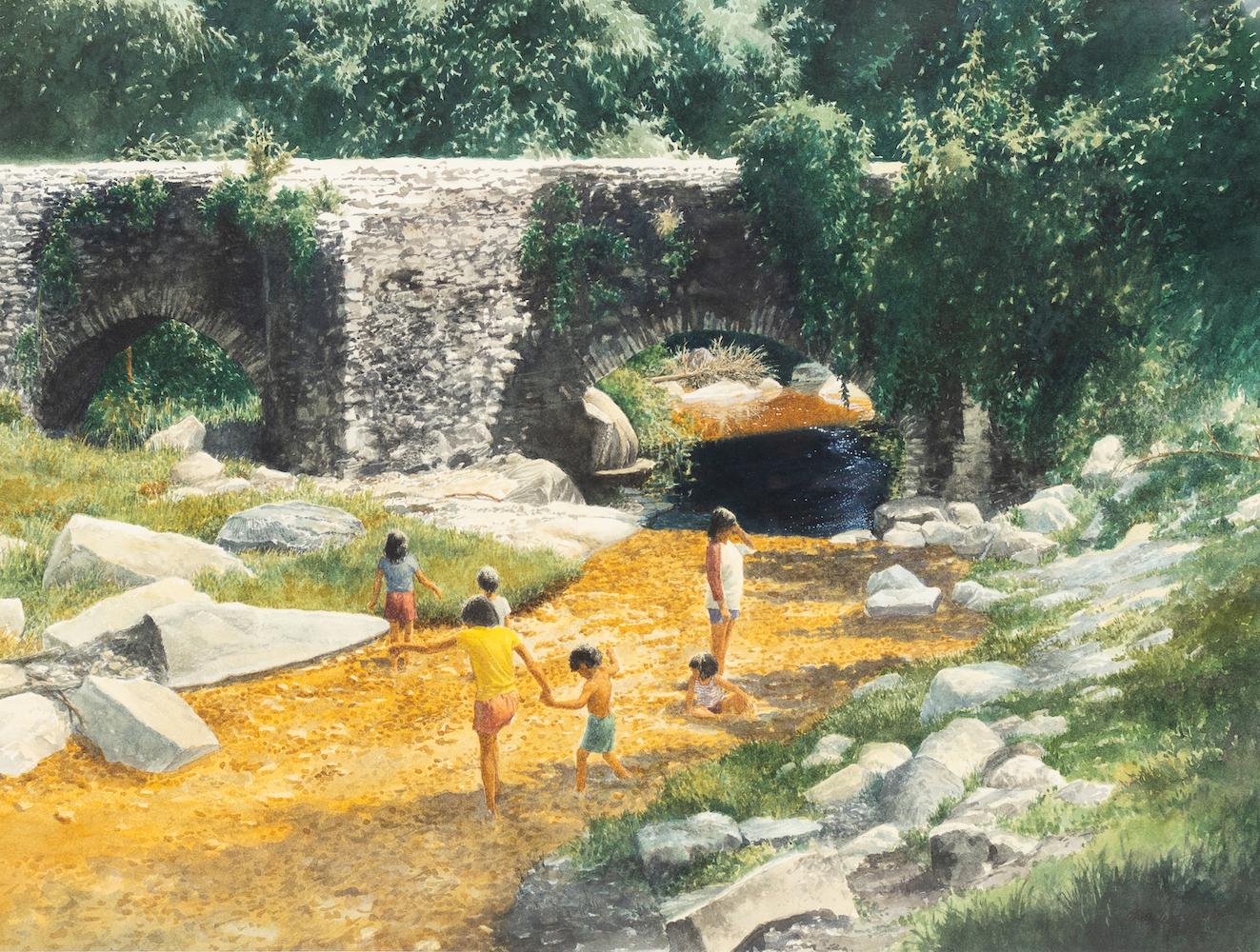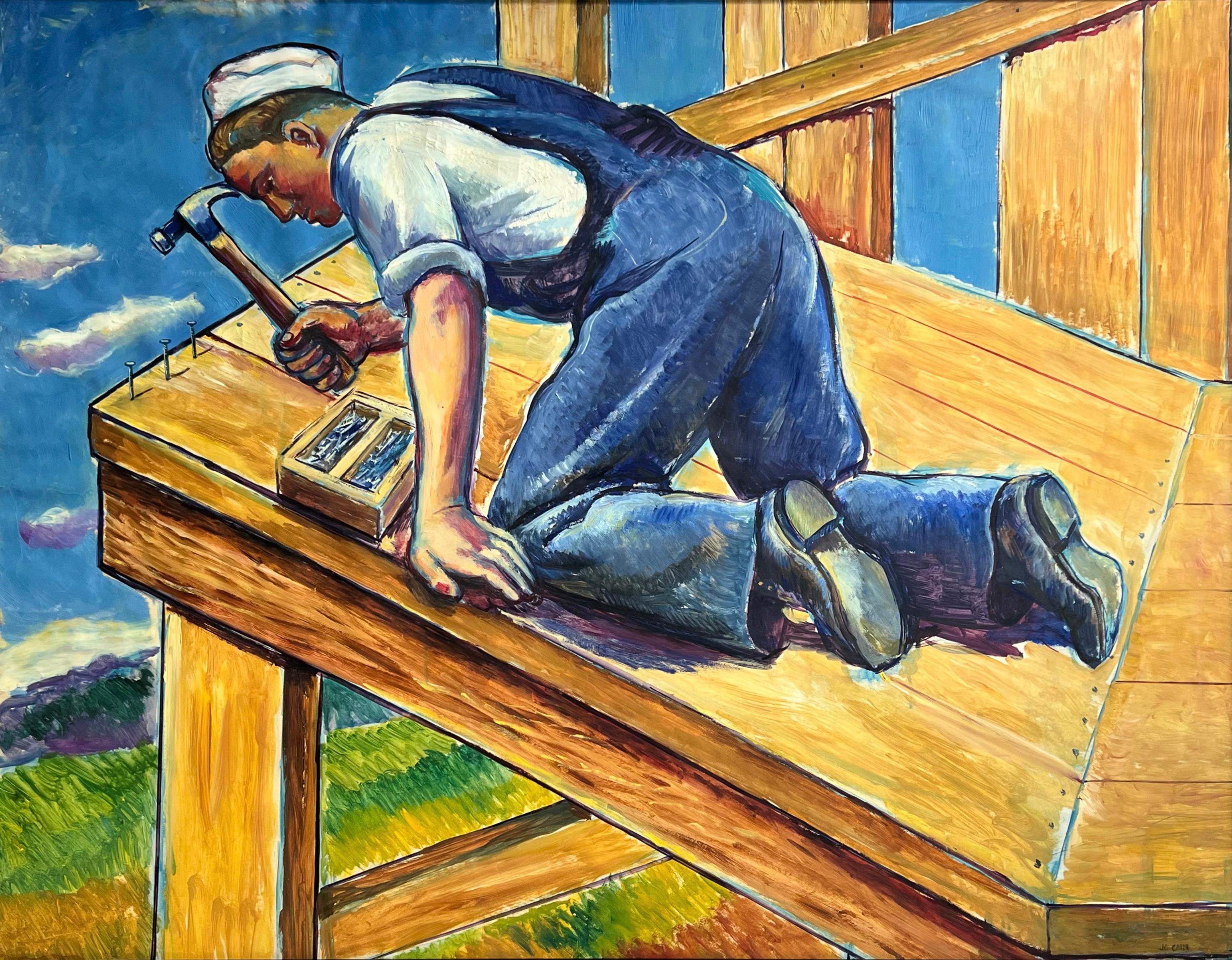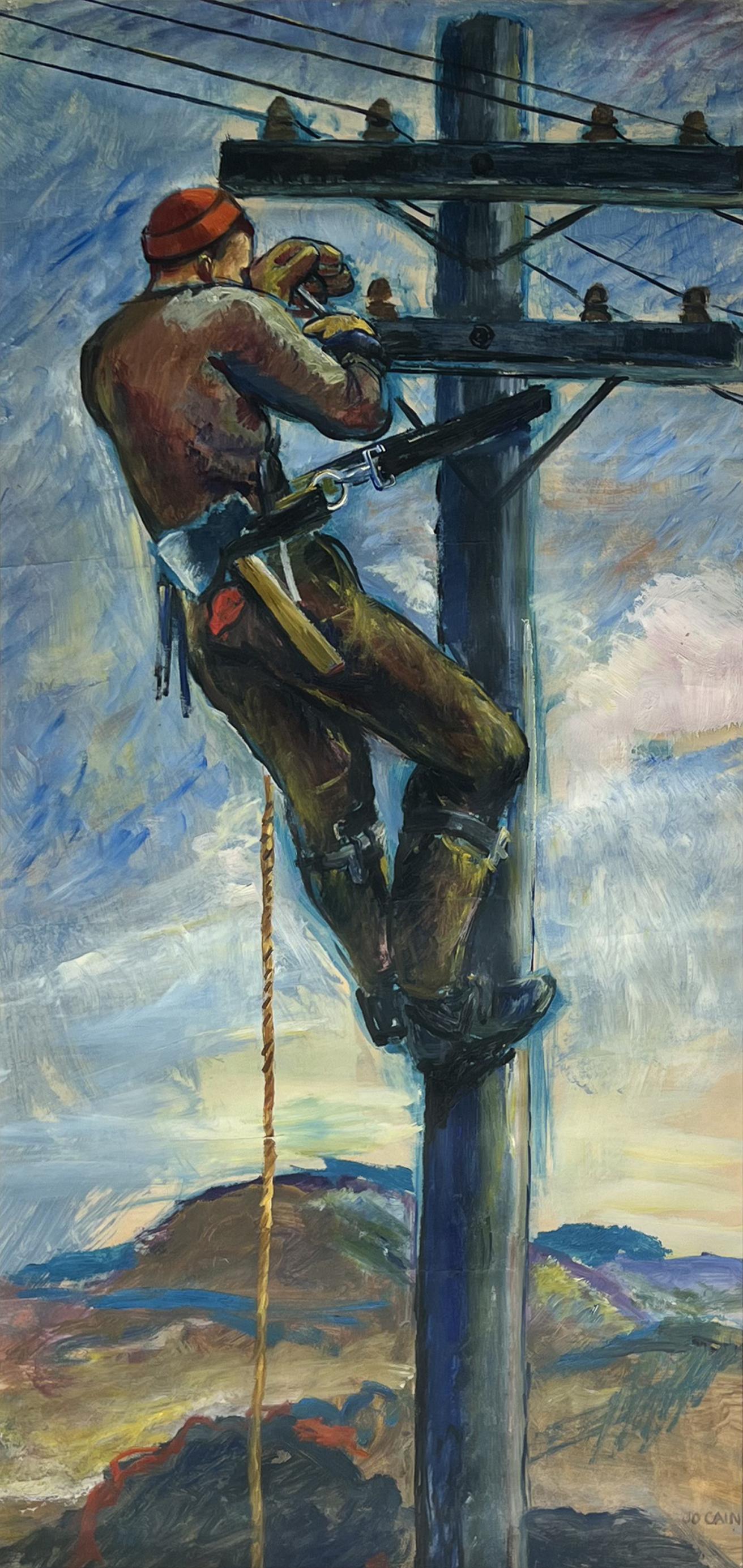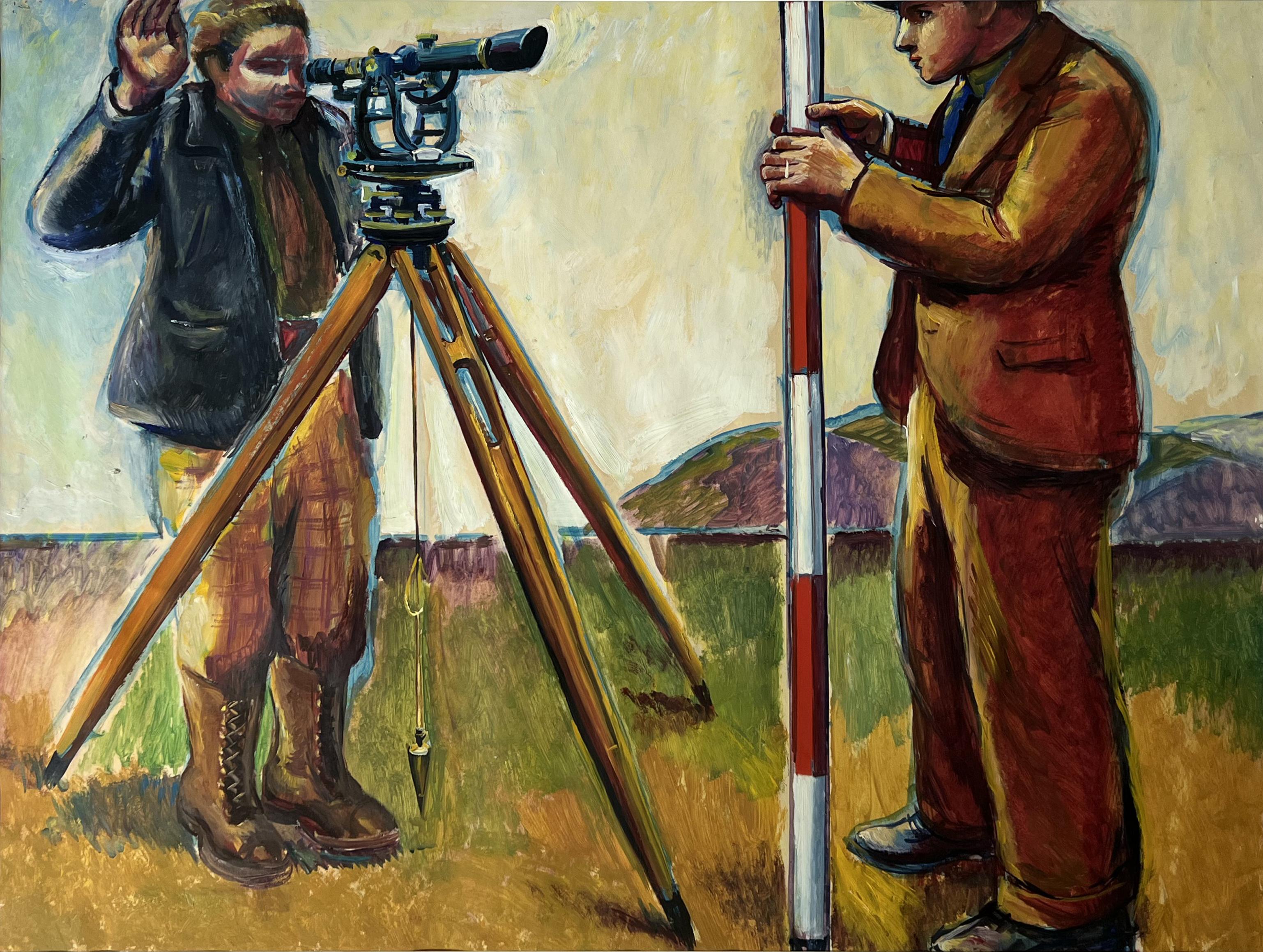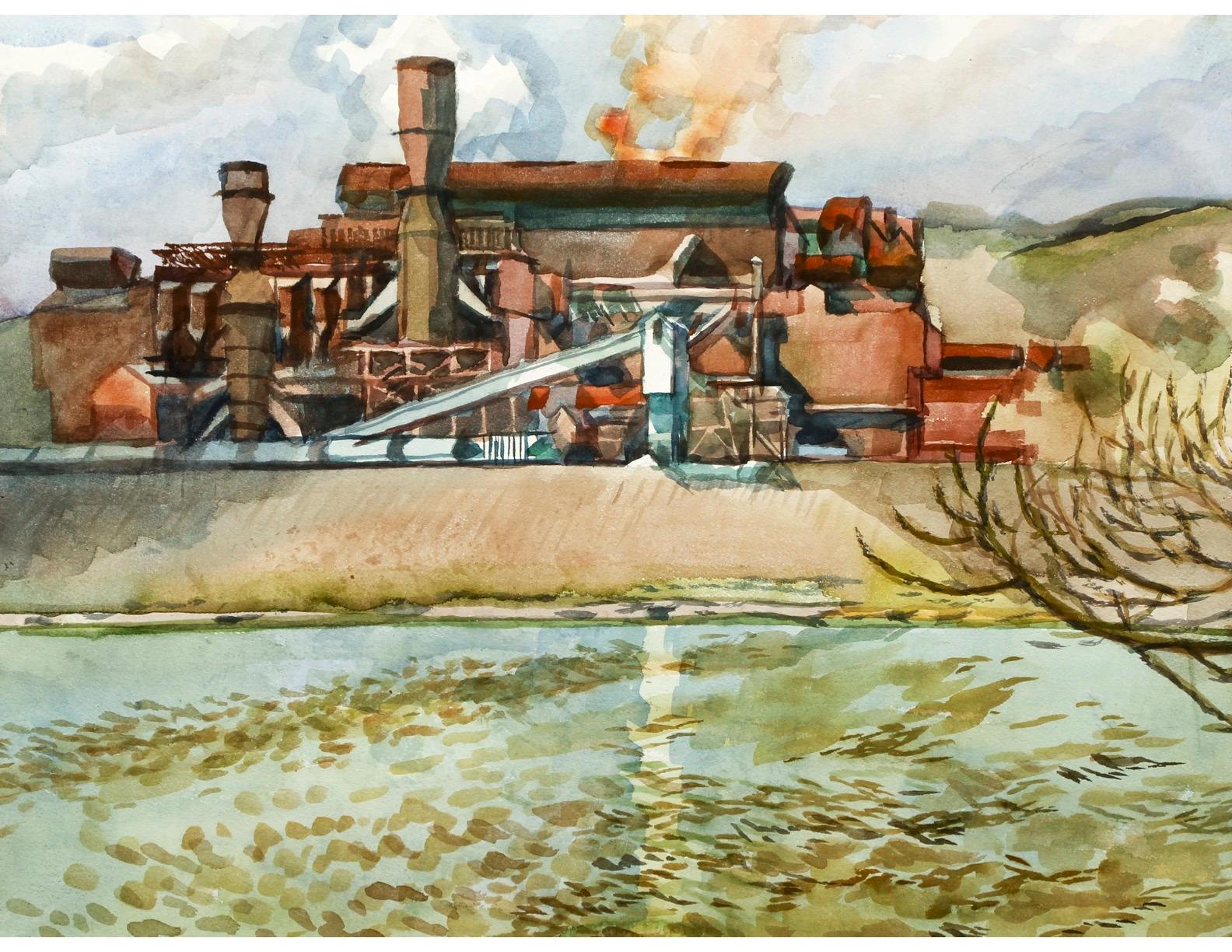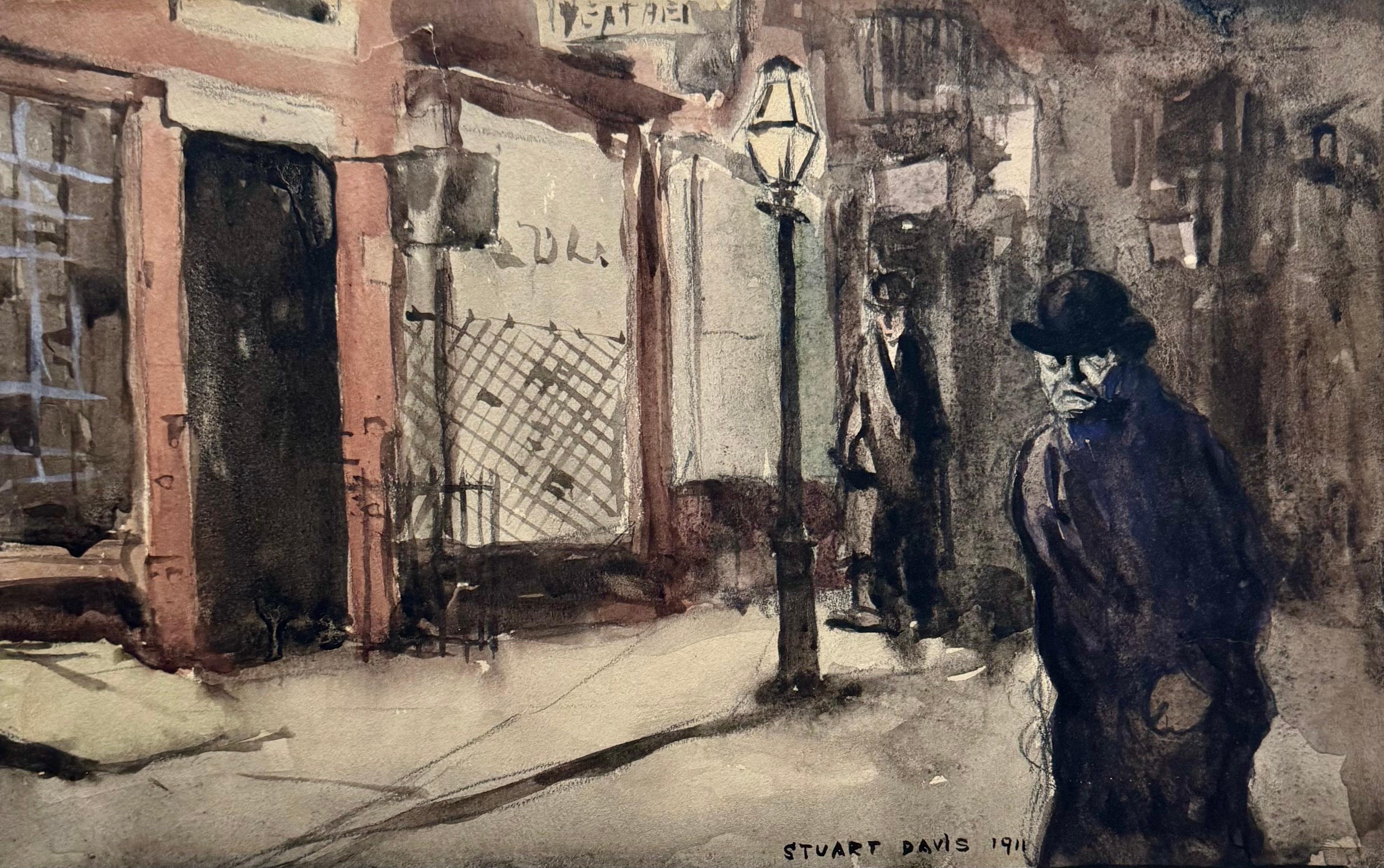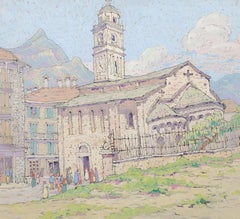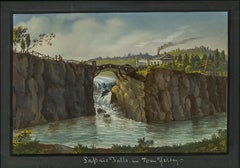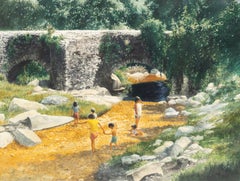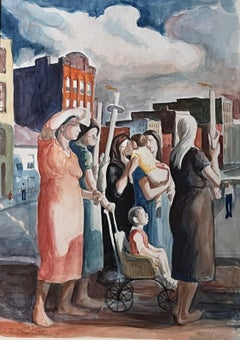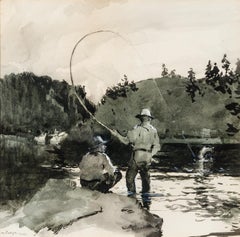
A Strike
View Similar Items
Want more images or videos?
Request additional images or videos from the seller
1 of 8
Frank Weston BensonA Strike1907
1907
About the Item
- Creator:Frank Weston Benson (1862-1951, American)
- Creation Year:1907
- Dimensions:Height: 10.75 in (27.31 cm)Width: 10.75 in (27.31 cm)
- Medium:
- Movement & Style:
- Period:
- Condition:
- Gallery Location:New York, NY
- Reference Number:Seller: APG 21236D.0021stDibs: LU2310061512
About the Seller
5.0
Recognized Seller
These prestigious sellers are industry leaders and represent the highest echelon for item quality and design.
Established in 1952
1stDibs seller since 2010
32 sales on 1stDibs
Typical response time: 12 hours
Associations
Art Dealers Association of America
More From This SellerView All
- San Gio, ComoBy Eleanor Parke CustisLocated in New York, NYEleanor Park Custis painted scenes as varied as the artist's travels: from her hometown of Washington, D.C., to the coastal towns of New England; from the prosperous fishing villages of Brittany, to Venice and the mountain villages and lakes of northern Italy. While Custis's subjects are diverse, her style is consistent and distinctive throughout this body of work. Her use of flat areas of color delineated by dark contours is reminiscent of the aesthetics of woodblock printing. Like many artists of the day, she was profoundly influenced by Japanese woodblock prints, and her adaptation of the aesthetic by 1924 led to her most productive artistic period. Eleanor Custis hailed from a socially prominent Washington, D.C., family. She was distantly related to Martha Custis Washington, America's first First Lady. Custis began three years of formal art training in the autumn of 1915 at the Corcoran School of Art in Washington, and was guided and inspired by Impressionist artist Edmund C. Tarbell, one of the Ten American Painters, who became the Corcoran School's principal in 1918. Custis exhibited widely in many of the Washington art societies and clubs for much of her career. She was also a frequent exhibitor at the Grand Central Art Galleries in New York City; her last one-woman show there was in April 1945. Custis's mature style emerged in scenes of the streets, wharves, and drydocks of seacoast villages from Maine to Massachusetts, which she visited during the summers of 1924 and 1925. She was working in Gloucester, Massachusetts in August 1924, and painted several gouaches of the town's wharves and winding streets, including In Gloucester Harbor and At the Drydock, Gloucester. During her stay, Custis may have met Jane Peterson or at least must have seen her work, the best of which was executed in Gloucester during the preceding ten years. The similarity between their styles is unmistakable, but, while it may be tempting to suggest that Custis was influenced by Peterson during her summer in Gloucester, the connection between their work is probably more a case of shared aesthetics and common European influences. Custis expanded her subject repertoire with three trips to Europe between 1926 and 1929, and was inspired by the Old World charm of Holland, northern France, Switzerland, and Italy, leading to such works as New Kirk, Delft, Holland, Market Day in Quimper, At the Foot of the Matterhorn, and The Town Square, Varenna. A Mediterranean cruise in 1934 introduced her to the Near East, and the bustling, colorful streets and bazaars of Cairo, captured in works like A Street in Cairo, Egypt and A Moroccan Jug...Category
20th Century American Realist Landscape Drawings and Watercolors
MaterialsPaper, Gouache
- Edam, HollandBy Thomas FransioliLocated in New York, NYThomas Fransioli’s cityscapes are crisp and tidy. Buildings stand in bold outline, their forms squarely defined by stark light and long shadows. Saturated color permeates every corner of his canvases, from vibrant oranges and greens to smoky terra cottas and granites. Even the trees that line Fransioli’s streets, parks, and squares are sharp and angular, exactly like those in an architect’s elevation rendering. But Fransioli’s cities often lack one critical feature: people. His streets are largely deserted, save for parked cars and an occasional black cat scurrying across the pavement. People make rare appearances in Fransioli’s compositions, and never does the entropy of a crowd overwhelm their prevailing sense of order and precision. People are implied in a Fransioli painting, but their physical presence would detract from the scene’s bleak and surreal beauty. Magic Realism neatly characterizes Fransioli’s artistic viewpoint. The term was first broadly applied to contemporary American art in the 1943 Museum of Modern Art exhibition, American Realists and Magic Realists. As exhibition curator Dorothy Miller noted in her foreword to the catalogue, Magic Realism was a “widespread but not yet generally recognized trend in contemporary American art…. It is limited, in the main, to pictures of sharp focus and precise representation, whether the subject has been observed in the outer world—realism, or contrived by the imagination—magic realism.” In his introductory essay, Lincoln Kirstein took the concept a step further: “Magic realists try to convince us that extraordinary things are possible simply by painting them as if they existed.” This is Fransioli, in a nutshell. His cityscapes exist in time and space, but certainly not in the manner in which he portrays them. Fransioli—and other Magic Realists of his time—was also the heir to Precisionism, spawned from Cubism and Futurism after the Great War and popularized in the 1920s and early 1930s. While Fransioli may not have aspired to celebrate the Machine Age, heavy industry, and skyscrapers in the same manner as Charles Sheeler, his compositions tap into the same rigid gridwork of the urban landscape that was first codified by the Precisionists. During the 1950s, Fransioli was represented by the progressive Margaret Brown...Category
20th Century American Realist Landscape Drawings and Watercolors
MaterialsPaper, Gouache
- Passaic Falls in New JerseyBy Nicolino V. CalyoLocated in New York, NYNicolino Calyo's career reflects a restless spirit of enterprise and adventure. Descended in the line of the Viscontes di Calyo of Calabria, the artist was the son of a Neapolitan army officer. (For a brief biographical sketch of the artist see Philadelphia Museum of Art, Pennsylvania, Philadelphia: Three Centuries of American Art, exhib. cat. [1976], pp. 299-301 no. 257.) Calyo received formal training in art at the Naples Academy. His career took shape amidst the backdrop of the political turbulence of early nineteenth-century Italy, Spain, and France. He fled Naples after choosing the losing side in struggles of 1820-21, and, by 1829, was part of a community of Italian exiles in Malta. This was the keynote of a peripatetic life that saw the artist travel through Europe, to America, to Europe again, and back to America. Paradoxically, Calyo’s stock-in-trade was close observation of people and places, meticulously rendered in the precise topographical tradition of his fellow countrymen, the eighteenth-century vedute painters Antonio Canale (called Canaletto) and Francesco Guardi. In search of artistic opportunity and in pursuit of a living, Calyo left Malta, and, by 1834, was in Baltimore, Maryland. He advertised his skills in the April 16, 1835 edition of the Baltimore American, offering "remarkable views executed from drawings taken on the spot by himself, . . . in which no pains or any resource of his art has been neglected, to render them accurate in every particular" (as quoted in The Art Gallery and The Gallery of the School of Architecture, University of Maryland, College Park, 350 Years of Art & Architecture in Maryland, exhib. cat. [1984], p. 35). Favoring gouache on paper as his medium, Calyo rendered faithful visual images of familiar locales executed with a degree of skill and polish that was second nature for European academically-trained artists. Indeed, it was the search for this graceful fluency that made American artists eager to travel to Europe and that led American patrons to seek out the works of ambitious newcomers. On June 16, 1835, the Baltimore Republican reported that Calyo was on his way north to Philadelphia and New York to paint views of those cities. Calyo arrived in New York, by way of Philadelphia, just in time for the great fire of December 1835, which destroyed much of the downtown business district. He sketched the fire as it burned, producing a series of gouaches that combined his sophisticated European painting style with the truth and urgency of on-the-spot observation. Two of his images were given broad currency when William James Bennett reproduced them in aquatint. The New-York Historical Society owns two large Calyo gouaches of the fire, and two others, formerly in the Middendorf Collection, are now in the collection of Hirschl & Adler Galleries. From 1838 until 1855, Calyo listed himself variously in the New York City directories as a painter, a portrait painter, and as an art instructor, singly, and in partnership with his sons, John (1818-1893) and later, the younger Hannibal (1835-1883). Calyo also attracted notice for a series of scenes and characters from the streets of New York, called Cries of New York. These works, which were later published as prints, participate in a time-honored European genre tradition. Calyo’s New York home became a gathering place for European exiles, including Napoleon III. Between 1847 and 1852 Calyo exhibited scenes from the Mexican War and traveled from Boston to New Orleans with his forty-foot panorama of the Connecticut River. Later, he spent time in Spain as court painter to Queen Maria Christina, the result of his continuing European connections, but he was back in America by 1874, where he remained until his death. The Passaic River rises in the hills just south of Morristown, New Jersey, marking a serpentine eighty-mile course before it empties into Newark Bay. It flows north-northeast to Paterson, where it falls seventy feet in a spectacular cataract before continuing south through Passaic and Newark. William Gerdts, in Painting and Sculpture in New Jersey (1964, pp. 51-2), describes the falls as: the most important [landscape] subject in New Jersey during the eighteenth and nineteenth centuries. . . . The Passaic Falls remained a popular spot, particularly during the romantic period. Indeed, newspapers, periodicals, and gift books contain many accounts of visits to the Falls, sentimental poems written about them or about a loved one visiting the Falls, or even, occasionally, in memory of one who perished in the waters of the Falls — usually intentionally. . . . Waterfalls . . . were popular among travelers in the period and the Passaic Falls were only surpassed by Niagara Falls and Trenton Falls...Category
19th Century American Realist Landscape Drawings and Watercolors
MaterialsPaper, Gouache
- Tourists Viewing the Temple of Karnak, EgyptBy Eleanor Parke CustisLocated in New York, NYEleanor Park Custis painted scenes as varied as the artist's travels: from her hometown of Washington, D.C., to the coastal towns of New England; from the prosperous fishing villages of Brittany, to Venice and the mountain villages and lakes of northern Italy. While Custis's subjects are diverse, her style is consistent and distinctive throughout this body of work. Her use of flat areas of color delineated by dark contours is reminiscent of the aesthetics of woodblock printing. Like many artists of the day, she was profoundly influenced by Japanese woodblock prints, and her adaptation of the aesthetic by 1924 led to her most productive artistic period. Eleanor Custis hailed from a socially prominent Washington, D.C., family. She was distantly related to Martha Custis Washington, America's first First Lady. Custis began three years of formal art training in the autumn of 1915 at the Corcoran School of Art in Washington, and was guided and inspired by Impressionist artist Edmund C. Tarbell, one of the Ten American Painters, who became the Corcoran School's principal in 1918. Custis exhibited widely in many of the Washington art societies and clubs for much of her career. She was also a frequent exhibitor at the Grand Central Art Galleries in New York City; her last one-woman show there was in April 1945. Custis's mature style emerged in scenes of the streets, wharves, and drydocks of seacoast villages from Maine to Massachusetts, which she visited during the summers of 1924 and 1925. She was working in Gloucester, Massachusetts in August 1924, and painted several gouaches of the town's wharves and winding streets, including In Gloucester Harbor and At the Drydock, Gloucester. During her stay, Custis may have met Jane Peterson or at least must have seen her work, the best of which was executed in Gloucester during the preceding ten years. The similarity between their styles is unmistakable, but, while it may be tempting to suggest that Custis was influenced by Peterson during her summer in Gloucester, the connection between their work is probably more a case of shared aesthetics and common European influences. Custis expanded her subject repertoire with three trips to Europe between 1926 and 1929, and was inspired by the Old World charm of Holland, northern France, Switzerland, and Italy, leading to such works as New Kirk, Delft, Holland, Market Day in Quimper, At the Foot of the Matterhorn, and The Town Square, Varenna. A Mediterranean cruise in 1934 introduced her to the Near East, and the bustling, colorful streets and bazaars of Cairo, captured in works like A Street in Cairo, Egypt and A Moroccan Jug...Category
20th Century American Realist Landscape Drawings and Watercolors
MaterialsPaper, Gouache
- Hemlock--Selden's Neck, Lyme, ConnecticutBy Charles De Wolf BrownellLocated in New York, NYFramed, 5.25 x 8.5 x 1.5 in.Category
19th Century American Realist Landscape Drawings and Watercolors
MaterialsWatercolor
- Tree and Fence, East Hartford, Connecticut (New England Landscape)By Charles De Wolf BrownellLocated in New York, NYWatercolor and gouache on paperCategory
Mid-19th Century American Realist Landscape Drawings and Watercolors
MaterialsWatercolor, Gouache
You May Also Like
- Delaware & Hudson Canal, Ellenville NY watercolor by Edward Lamson HenryBy Edward Lamson HenryLocated in Hudson, NYOriginal watercolor by Edward Lamson Henry looking back at barge travel through small New York state towns. Delaware & Hudson Canal, Ellenville N...Category
Early 1900s American Realist Landscape Drawings and Watercolors
MaterialsPaper, Watercolor
- "Children in a Creek" Playful Sunny Landscape Water Bridge Forest Rocks HappyLocated in Austin, TXThis idyllic scene shows children playing in a creek next to a cobblestone bridge on a sunny day. The surrounding foliage is lush and green. By Charles Shaw 17.5" x 23" Watercolor on...Category
20th Century American Realist Landscape Drawings and Watercolors
MaterialsWatercolor, Archival Paper
- "Going to the Festival" WPA Ashcan 20th Century American Scene Modern RealismBy Daniel Ralph CelentanoLocated in New York, NY"Going to the Festival" WPA Ashcan 20th Century American Scene Modern Realism Daniel Celentano (1902 - 1980) "Going to the Festival," 14 1/2 x 10 1/2. Watercolor on paper, c. 1930s....Category
1930s American Realist Figurative Drawings and Watercolors
MaterialsWatercolor, Paper
- "Brick Layers" WPA American Scene Mid 20th Century Modern Drawing Men WorkingBy David FredenthalLocated in New York, NY"Brick Layers" WPA American Scene Mid 20th Century Modern Drawing Men Working. 21 x 15 inches Watercolor on paper. c. 1938. Signed lower left. BIO David Fredenthal (1914 - 1958) was one ot America's most respected watercolor artists. He was famous for his bold, intensely vigorous and complex paintings and drawings that expressed his deep feeling for excitement with life and living. He was a draftsman with seemingly a special gift for catching anything, physically and emotionally on the spot, and he never went anywhere without three or four loaded pens and a sketchbook in his pocket. As part of the WPA project he executed a number of murals including the Sports Pavilion on the Heinz Building of the New York World's Fair 1939. Some of his fresco and mural techniques were inspired by his friendship with Diego Rivera who had admired and encouraged him in the early 1930's. After he won a traveling scholarship to Europe from The Museum of Modern Art at age 19, he was the recipient of two Guggenheim grants in Painting. He had his first solo exhibition at the Downtown Gallery in New York in 1937 at age 23, and many others after that including the Whitney Museum of American Art in 1947. Because of Fredenthal's prodigious drawing gifts, he was chosen by Erskine Caldwell to illustrate his novel "Tobacco Road" in 1940. He was a War Artist Correspondent for both the State Department (the European and Asian fronts) and Life magazine from 1943 to 1946 and his work was featured in Life magazine regularly during the war and after until the end of his life. Also featured in Life in 1956 were drawings that Fredenthal had vividly recorded on his sketch pad, of the entire filming of the movie, The Pride and the Passion, starring Cary Grant, Sophia Loren, and Frank Sinatra, along the treacherous mountain passes of Spain. Though he was fiercely committed to an art that expressed deeply human social values and issues and was quite hostile to abstraction, he was friendly with a number of abstract artists such as David Smith, Ad Reinhardt, Philip Guston, Paul Feeley, and Herman Cherry.Category
1930s American Realist Figurative Drawings and Watercolors
MaterialsWatercolor, Handmade Paper
- Industrial Man Working Mid 20th Century American Scene Social Realism Modern WPABy Jo CainLocated in New York, NYIndustrial Man Working Mid 20th Century American Scene Social Realism Modern WPA Jo Cain (1904 - 2003) Hammering Nails 39 x 50 ½ inches Gouache on paper c. 19...Category
1930s American Realist Figurative Drawings and Watercolors
MaterialsPaper, Gouache
- Man Working Mid 20th Century American Scene Social Realism Industrial WPA ModernBy Jo CainLocated in New York, NYMan Working Mid 20th Century American Scene Social Realism Industrial WPA Modern Jo Cain (1904 - 2003) Telephone Pole Worker 38 1/4 x 18 1/2 inches Oil on pap...Category
1930s American Realist Figurative Drawings and Watercolors
MaterialsPaper, Gouache
Recently Viewed
View AllMore Ways To Browse
Silver Watch For Woman
Antique Portrait 1930s
Antique Drawing Woman
American School Forest Interior
Antique Mans Watch
Made In Occupied Japan
Oriental Paintings Birds
Black Forest Cat
Antique American Impressionism
John Held Jr
Duck Decoy Art
A Weston Oil Painting
The Gathering Storm
En Grisaille
Still Life Duck
W M Prior
Benson London
Drypoint Etching England
